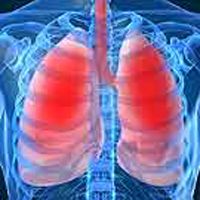Article
COPD Is More Common Among Poor and Rural Populations
Author(s):
Chronic obstructive pulmonary disease (COPD) is more common among poor residents of rural areas, according to findings presented at the 2015 American Thoracic Society International Conference.

Chronic obstructive pulmonary disease (COPD) is more common among poor residents of rural areas, according to findings presented at the 2015 American Thoracic Society International Conference.
Researchers from Johns Hopkins School of Medicine examined National Health Interview Survey (NHIS) data from 2009 to 2011 in order to determine the nationwide prevalence of COPD in urban vs. rural areas and determine the impact of rural residence and other factors on COPD prevalence. The other factors the investigators compared were region, neighborhood, poverty, race and ethnicity, household poverty, and housing characteristics. Nearly 90,000 participants in the study were all adults older than 40 years who self reported either symptoms of emphysema or chronic bronchitis.
“We wanted to identify the prevalence of COPD in urban and rural areas in the US and determine how residence, region, poverty, race and ethnicity, and other factors influence COPD rates,” lead author Sarath Raju, MD, MPH, reiterated in a press release.
The researchers concluded that rural residence and poverty level greatly contributed to risk for developing COPD. The disease was prevalent in 7.2 of the participants surveyed nationwide, with an increased 11.9 percent prevalence in rural and poor communities. The factors associated with COPD were white race, age, male sex, and years of smoking. There were also community level factors linked to COPD that the researchers found, such as rural residence, southern residence, and community poverty.
The researchers found that when they added individual income to the model of COPD prevalence, community poverty was not a significant factor any longer. In this particular model, individual income was a protective factor, the authors said. Additionally, when the researchers conducted bivariate and multivariate models of individuals living in the south, there appeared to be a link between community level fuel sources, such as biomass fuels, with COPD. However, there was not an association between this and the multivariate models.
“Findings suggest regional differences and the need for future disparities research to understand the potential contribution of occupational exposures, fuel sources, and indoor air pollutants to COPD prevalence in poor, rural areas,” the authors concluded. The authors also commented that the research is still ongoing at the time the study was presented — early this spring.
Less educated patients often do not recognize the term “COPD,” but may recognize the term “emphysema,” as previously reported on by MD Magazine. Being familiar with these terms was linked to having a higher education level, though was not associated with age, sex, or smoking in that study.





